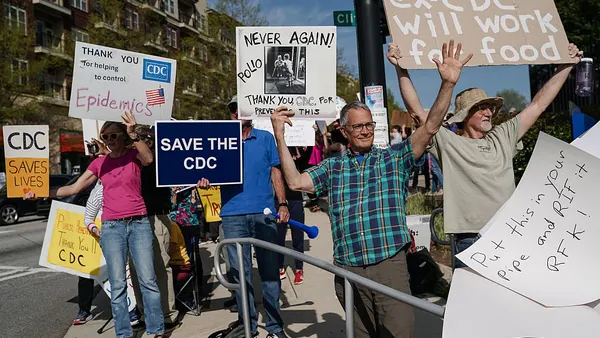Dive Brief:
- By 2021, the U.S. economy is expected to add just over 7.2 million jobs, a 5% increase from today, but workers in middle-wage jobs may not find as many opportunities despite that expected job growth, according to a new study.
- The study, from CareerBuilder and Economic Modeling Specialists International (a CareerBuilder company) found that "high-wage" and "low-wage" occupations are each projected to grow 5% from 2016 to 2021, but middle-wage jobs are only estimated to experience a 3% growth.
- 61% of the 173 occupations in the study expected to lose ground over the next five years are in the middle-wage category - a bad sign for employers looking to fill those types of jobs. The reason may be there are not enough skilled workers to keep the middle-wage jobs filled.
Dive Insight:
CareerBuilder and Emsi defined middle-wage jobs as those that pay $13.84 to $21.13 per hour. Among middle-wage jobs, medical assistants are projected to grow the most (19%), with Customer Service Representatives next (6%).
"The U.S. is facing a sustained trend of declining middle-wage employment that has serious implications not only for workers, but for the economy overall," said Matt Ferguson, CEO of CareerBuilder. He added that if American employers can't find a way to re-skill and up-skill workers, middle-wage workers will become increasingly susceptible to unemployment or will have to move into lower-paying roles that may not support them and their families. The could drive a negative ripple effect on "consumer spending, housing, investing and other key financial indicators."
The Careerbuilder study may have tapped into a serious concern, as a White House initiative launched in 2015 aims to build America's overall skill sets working with a group called Upskill America. Unfortunately, some recent research shows that upskilling and reskilling efforts are inadequate for a large percentage of employers trying to take their low-skilled employees to the next level.










